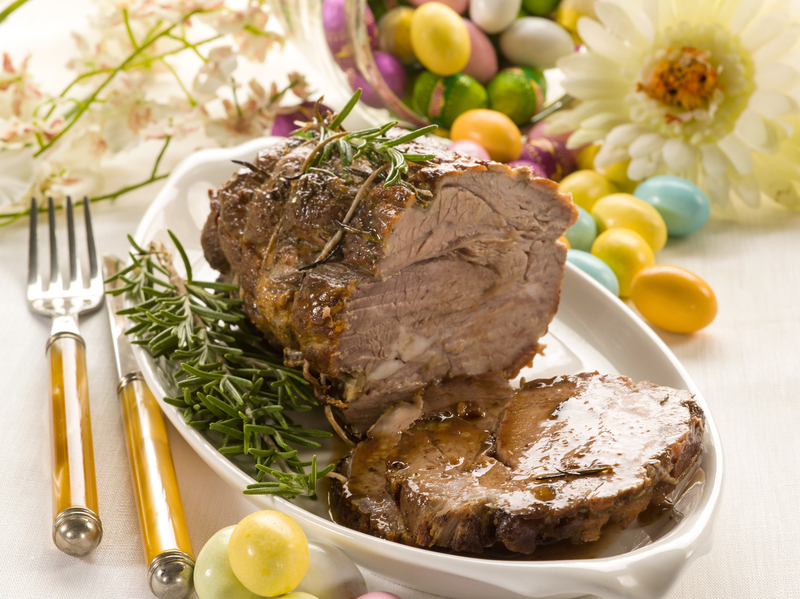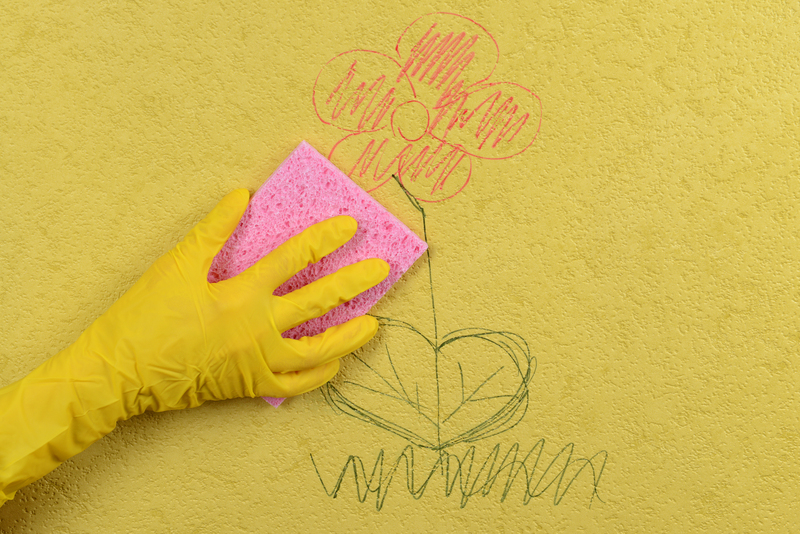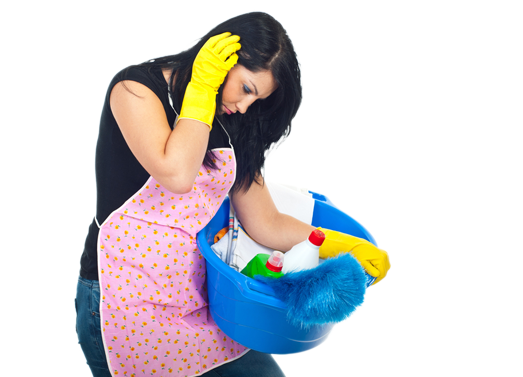Velvet Curtains Guide: Clean with Care and Confidence
Posted on 14/06/2025
Velvet Curtains Guide: Clean with Care and Confidence
Velvet curtains are a timeless home decor classic, imparting luxury, warmth, and a rich texture to any room. Yet, when it comes to cleaning velvet curtains--with their plush pile and delicate fibers--many homeowners have questions and concerns. This comprehensive guide will empower you to keep your velvet drapes dazzling, ensuring longevity and beauty for years to come.
Why Velvet Curtains Require Special Care
Velvet is a unique textile characterized by a soft, dense pile created from silk, cotton, polyester, or other synthetic fibers. This pile is what gives velvet its trademark sheen and touchable softness. However, these very features make velvet drapes more susceptible to dust, moisture, and crushing than regular fabrics. Without proper cleaning methods, you risk flattening the pile, warping the fabric, or even permanent staining.
- Delicate Pile: The raised texture traps dust and requires gentle handling during cleaning.
- Sensitive to Moisture: Excess water can damage the backing and cause watermarks or shrinkage.
- Color Retention: Harsh chemicals or sunlight can cause fading or color bleeding.
Understanding the essentials of velvet curtain care sets the foundation for clean, vibrant window treatments that maintain their irreplaceable charm.

Types of Velvet Used for Curtains
Before diving into care techniques, it's important to identify the type of velvet used in your curtains. This knowledge guides appropriate cleaning approaches:
- Silk Velvet: Ultra-luxurious and delicate, requiring exceptional care.
- Cotton Velvet: Softer and somewhat sturdier, but still sensitive to moisture.
- Synthetic Velvet: Made from polyester or rayon, offering greater durability and easier cleaning.
- Crushed Velvet: Has a deliberately "wrinkled" effect and often stands up better to wear and maintenance.
Check the curtain's label for fabric content and cleaning instructions. If in doubt, always err on the side of caution and test any cleaning method on a hidden area first.
Routine Maintenance for Velvet Curtains
Dusting and Vacuuming: The First Line of Defense
Frequent removal of dust prevents build-up and keeps your velvet window treatments looking fresh. Here's how:
- Use a soft-bristle brush attachment on your vacuum cleaner.
- Lightly brush or vacuum the curtains in the direction of the pile, avoiding harsh pressure.
- Do not use rotary brushes or harsh attachments that could crush fibers.
- Vacuum once a week, or more often in high-traffic or dusty areas.
Using Lint Rollers and Cloths
A lint roller or a soft, dry microfiber cloth can efficiently lift lint, pet hair, and small debris from velvet curtains. Gently roll or dab the surface, always working with the nap of the velvet rather than against it.
Spot Cleaning Velvet Curtains
Inevitably, dust isn't the only threat--accidents happen. Whether it's a splash of coffee or a stray marker, quick and careful action can often save your luxury velvet drapes from permanent damage.
- Blot, don't rub! Rubbing pushes stains deeper into the pile and distorts the texture.
- For liquid spills, use a clean, white cloth to gently blot up as much liquid as possible.
- If needed, dampen another cloth with cold water (not soaking wet!) and continue blotting--again, no rubbing.
- For tougher stains, mix a very mild detergent with water. Dip a cotton swab or small white cloth into the solution, dab gently on a hidden section first, and if safe, continue on the stain.
- Do not over-wet the fabric or use commercial spot-removers unless the label allows.
Drying the Cleaned Area
After spot treatment, let the area air dry completely. You may gently use a hair dryer on the "cool" setting from a safe distance to speed up drying. Once the area is dry, softly brush the pile upwards to restore texture.
Deep Cleaning Velvet Curtains
How often do velvet drapes need deep cleaning? Once every 12-18 months is sufficient, unless there is heavy soiling or accidental stains. When it's time for a thorough clean, here are your main options:
Dry Cleaning Velvet Curtains
- Dry cleaning is the safest method for most velvet curtains, especially silk or cotton blends.
- Look for curtain labels specifying "dry clean only".
- Before heading to your local cleaner, remove all hooks, weights, and rings to prevent snagging.
- If detaching the curtains is not practical, some specialty companies offer on-site dry cleaning for drapes.
Can You Wash Velvet Curtains at Home?
Many synthetic velvets are more forgiving and may be machine-washable. However, always check care labels:
- If permits, wash curtains individually in cold water on the gentlest cycle, using a mild detergent.
- Never wring or twist velvet fabrics.
- After washing, lay the curtains flat on a large towel to air dry. Hanging while wet can stretch or distort the fabric.
Note: Even if the label states "machine washable," spot test first to ensure the dye doesn't bleed or the texture doesn't change.
Hand Washing Velvet Curtains
For smaller panels or extremely delicate velvet, hand washing offers more control.
- Use a clean bathtub or large sink filled with cold water and a mild detergent.
- Gently agitate the fabric without scrubbing.
- Rinse thoroughly with cold water to remove any soap residue.
- Press out water gently--never twist or wring. Roll in a towel to absorb excess moisture.
- Air dry flat in a well-ventilated area away from direct sunlight.
Removing Wrinkles and Creases from Velvet Curtains
After cleaning or storage, you may face wrinkles and flattened pile on your velvet drapes. Here's how to restore their signature lushness:
Steaming Velvet Curtains
- Use a garment or handheld steamer at a safe distance (at least 6-8 inches away).
- Never press the hot plate directly to the velvet, as this will crush the pile and leave shiny marks.
- Lightly steam from the back if possible, gently pulling the curtain to remove wrinkles.
- Create smooth lines and refresh fibers by using your hands to "fluff" the pile as you go.
Brushing and Refluffing Velvet
Once the curtains are dry and steamed, use a soft-bristled brush to lift the pile, working in the direction of the nap. A gentle touch is key to reviving the velvet's vibrant texture and uniform appearance.
Common Mistakes to Avoid When Cleaning Velvet Drapes
- Do not use harsh chemicals or bleach, which can discolor or degrade the fabric.
- Avoid direct sunlight for drying, as ultraviolet light fades delicate dyes quickly.
- Never iron velvet directly; always use a steamer or the back of the fabric if a cool iron is necessary.
- Do not soak velvet for long periods. Extended contact with water can distort the backing and cause shrinkage or separation.
- Avoid excessive friction--during both washing and day-to-day use--to prevent pile crushing and bald spots.
Professional Curtain Cleaning Services
Despite your best efforts, there are times when only a professional touch will do for your beloved velvet drapery.
- Valuable, antique, or very large velvet curtains are best left to professional curtain cleaning companies.
- Professionals use specialized dry cleaning solvents and careful techniques to maintain the integrity of the velvet pile.
- This is especially recommended for curtains with attached linings, heavy embellishments, or delicate trims.
Tips for Keeping Velvet Curtains Clean and Stunning
- Install curtain tiebacks: Not only do these showcase the drapery, but they also prevent excessive touching and soiling.
- Close windows on windy days: This reduces dust and dirt blown onto the fabric.
- Rotate curtains periodically to ensure even sun exposure and reduce uneven fading.
- Introduce air purifiers in rooms where velvet curtains are hung, minimizing airborne dust.
- Use sheers or lining behind velvet curtains to protect the pile from direct sunlight.
Frequently Asked Questions on Velvet Curtain Care
Can All Velvet Curtains Be Washed?
Not always. Silk and most cotton velvet require dry cleaning, while some synthetic velvets may be labeled as machine- or hand-washable. Always check care instructions first.
What Should I Do If My Velvet Curtains Get Wet?
Blot excess moisture immediately, air dry flat, and avoid wringing or twisting. For lingering spots or texture changes, use a steamer or have them professionally cleaned.
How Often Should Velvet Curtains Be Cleaned?
Regular dust removal can be done weekly, with deep cleaning every 12-18 months or as needed based on exposure to dust, pets, and stains.
Is It Safe to Use Steam Cleaners or Iron on Velvet?
Steamers used correctly (from a safe distance) are generally safe and help refresh the pile. Never use an iron directly on velvet. If ironing is essential, use the lowest heat, iron from the back, and place a towel between the iron and velvet.

Velvet Curtains Cleaning Checklist
- Check the curtain care label for fabric type and instructions.
- Dust or vacuum weekly with a soft brush attachment.
- Spot clean spills immediately with a blotting technique.
- Deep clean once a year via dry cleaning or approved hand/machine washing.
- Steam to remove wrinkles--avoid direct heat.
- Restore pile by gently brushing after cleaning/steaming.
- Protect and rotate to prevent uneven fading.
Conclusion: Enjoy Velvet Curtains with Confidence
Velvet curtains are more than window coverings--they're statements of style and elegance. With a bit of knowledge and the right techniques, you can keep your velvet drapes fresh, clean, and luxuriously inviting for years to come. Whether you opt for regular dusting at home or occasional professional cleaning, following this velvet curtain care guide ensures you clean with care and confidence.
Love your velvet, treat it gently, and let it shine!
If You Found This Guide Helpful
Share it with fellow decor enthusiasts or bookmark for future reference! For more on curtain care and interior design inspiration, explore our related articles below.





